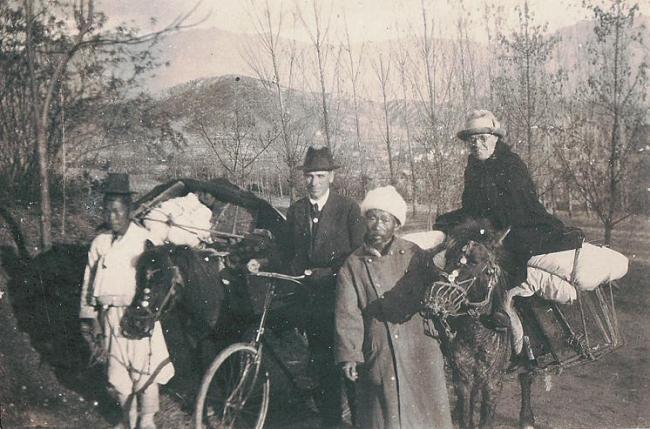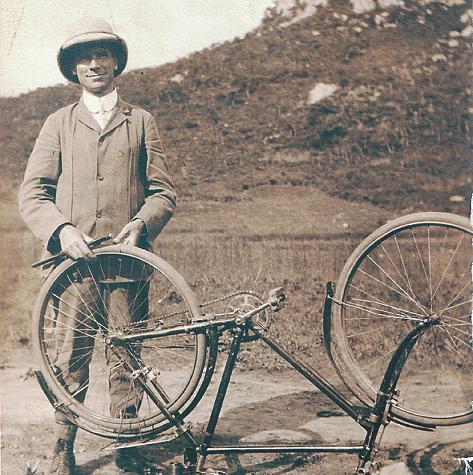An online history project by the Irish Embassy has pushed back the date of the country’s first known engagement with Korea to 1871.
The embassy published what it knew about Ireland’s early involvement in Korea on its website and invited readers to submit additional information to the living history project.
And Irish Ambassador Eamonn McKee has discovered that the leader of the first Irish people to visit the peninsula was a distant forbearer of his.
He discovered that Colonel Hugh McKee came on the USS Colorado to Korea as part of a raiding party in 1871.
The ambassador said: “He led a group, which included four Irish-born men, the first to reach Korea as far as we know ― very regrettably from an Irish diplomatic point of view.
“They attacked a garrison on Gangwha Island, near Seoul, and it seems that Pat Dougherty from Ireland killed General Yeo in the process. Col. McKee died from wounds sustained in the raid and the Irish-born U.S. Marines won Medals of Honor.”
The ambassador said that a Korean historian had revealed that a descendent of Col. McKee visited the monument of General Yeo and met the general’s descendents there about 25 years ago to achieve reconciliation.
“We are, needless to say, hoping to find an Irish person who got to Korea before them with more peaceful intentions,” he added.
The embassy published what it knew about Ireland’s early involvement in Korea on its website and invited readers to submit additional information to the living history project.
And Irish Ambassador Eamonn McKee has discovered that the leader of the first Irish people to visit the peninsula was a distant forbearer of his.
He discovered that Colonel Hugh McKee came on the USS Colorado to Korea as part of a raiding party in 1871.
The ambassador said: “He led a group, which included four Irish-born men, the first to reach Korea as far as we know ― very regrettably from an Irish diplomatic point of view.
“They attacked a garrison on Gangwha Island, near Seoul, and it seems that Pat Dougherty from Ireland killed General Yeo in the process. Col. McKee died from wounds sustained in the raid and the Irish-born U.S. Marines won Medals of Honor.”
The ambassador said that a Korean historian had revealed that a descendent of Col. McKee visited the monument of General Yeo and met the general’s descendents there about 25 years ago to achieve reconciliation.
“We are, needless to say, hoping to find an Irish person who got to Korea before them with more peaceful intentions,” he added.


A more positive Irish influence on Korea has been discovered in the missionary Charles Morris who founded many schools and churches while here from 1901 until his death in 1927.
Morris is buried in the Foreigners’ Graveyard in Seoul, where a steel stake beside his gravestone states that he graduated from Drew Theological Seminary in 1900 before ministering in Pyongyang and other places in Korea.
The Irish Embassy’s former Deputy Head of Mission, Frank O’Donoghue, discovered in 2011 that Morris was an Irish missionary who had been active in Korea, and the embassy was able to fill in details of his life thanks to a relative who contacted them via the website.
Morris’ granddaughter, Janet Downing, exchanged e-mails to piece together the history of the U.S.-educated missionary.
“I am very much into genealogy and have been trying to find out as much about my Irish ancestors since I did not know this special man,” wrote Dowling in an e-mail to the embassy.
She revealed that her grandfather was born in a place now called Ballyhuppahaun in Ireland’s County Laois in 1869 but had emigrated to the U.S. at the age of 19, following the death of his parents.
He arrived in Korea in 1901 and later married Louise Ogilvy, who had also moved here that year from Kansas in the U.S. to be a missionary at the age of 18. The pair wed in Kobe, Japan, in 1903 and lived in Yongbyun, in what is now North Korea, from 1905-1912. Morris established the area’s first church and went on to establish 49 more in ten regions over the space of five years. He reportedly trained eight ministers and elders, and baptized 3,193 believers during the same period. He also established two schools and opened a medical dispensary.
He lived in Pyongyang until 1915, before moving to Wonju where he became district superintendent and lived until he died of disease due to overwork in Seoul’s Severance Hospital on Jan. 18, 1927.
The Morris Memorial Church was built in Yongbyun in his honor in 1925 and the missionary was invited to the dedication ceremony to mark the 25th anniversary of his work ― a gesture which historians say shows that the local people thought of him as their great benefactor.
Dowling added: “My grandparents gave their lives to their work in Korea and loved the Korean people, but with so much of their time in North Korea one wonders about their contribution. But it appears that they were truly loved when they were there. My grandmother stayed on in Seoul until 1940, when she was forced to leave with all the other missionaries, and she died a year later.”
Dowling’s own mother returned to her birth country of Korea in 1934 to teach, and met her husband who was working there as a mine supervisor.
“Both my parents and grandparents fell in love and married in Korea,” Dowling said. “So although I have never been there ― it is certainly a big part of my heritage.”
The embassy has now published Morris’ obituary on its website to give an indication of the esteem in which he was held in Korea.
“It is also clear that his wife was a heroic missionary too, staying in Korea for another thirteen years after his death in 1927,” Ambassador McKee added.
By Kirsty Taylor(kirstyt@heraldcorp.com)
-
Articles by Korea Herald








![[Kim Seong-kon] Democracy and the future of South Korea](http://res.heraldm.com/phpwas/restmb_idxmake.php?idx=644&simg=/content/image/2024/04/16/20240416050802_0.jpg&u=)








![[KH Explains] Hyundai's full hybrid edge to pay off amid slow transition to pure EVs](http://res.heraldm.com/phpwas/restmb_idxmake.php?idx=652&simg=/content/image/2024/04/18/20240418050645_0.jpg&u=20240418181020)

![[Today’s K-pop] Zico drops snippet of collaboration with Jennie](http://res.heraldm.com/phpwas/restmb_idxmake.php?idx=642&simg=/content/image/2024/04/18/20240418050702_0.jpg&u=)